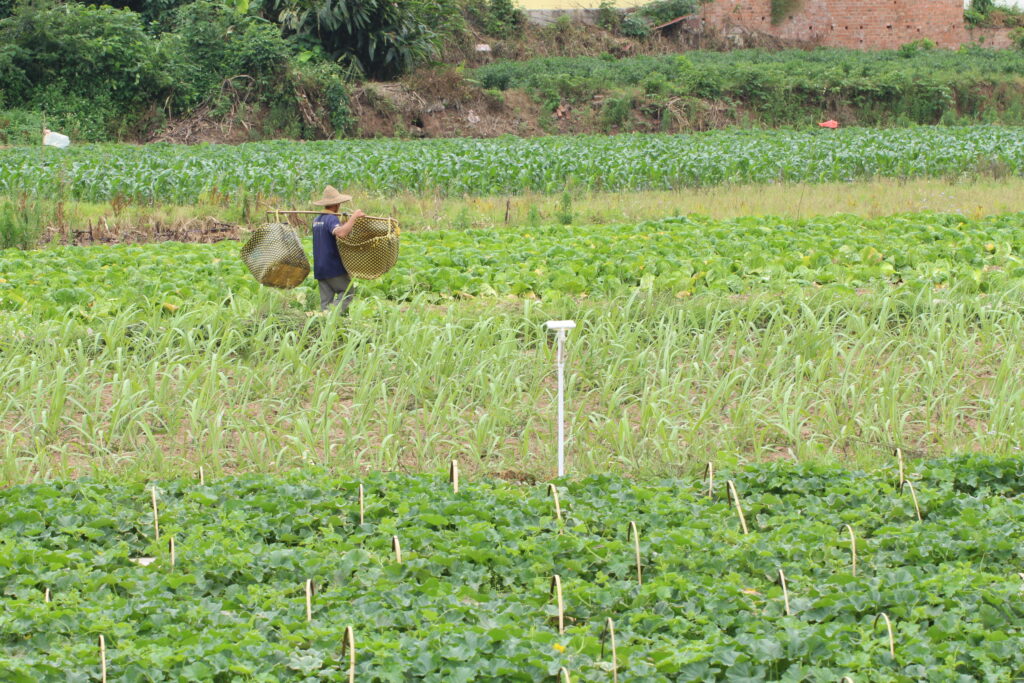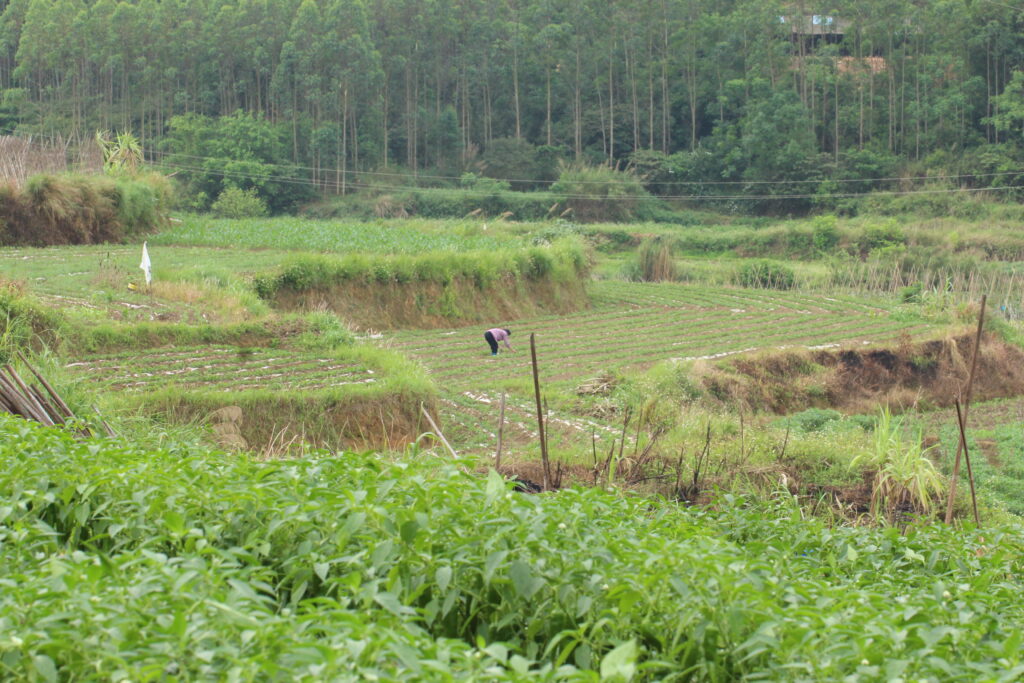The Philippines is an agricultural country. Of the country’s total land area of 30 million hectares, 47% is considered agricultural land. The agricultural sector is divided into farming, fisheries, livestock, and forestry, which make up 20% of the country’s gross domestic product.
Perhaps, Filipino farmers can learn something from a global study which found out that diversity in farm landscapes helps wildlife species. Wildlife refers to undomesticated flora and fauna species but has come to include all organisms that grow or live wild in an area without being introduced by humans.

A study led by Singapore-based Nanyang Technological University (NTU) found that more diverse wildlife thrives on farms, benefitting both farmers and the environment, when there is variety in the agricultural landscape.
Specifically, the types of crops and non-crop features on farms, as well as how they are arranged, should be varied, the study suggested.
The optimum approach, according to the study, would be to grow different crops like vegetables, cereals and fruit trees on the same farm in varying field sizes and layouts, as well as have semi-natural landscape features that are not crops, like shrubs, grassy borders and strips of wildflowers.
“This variety increases the number of native animal and plant species such as pollinators and predators of pests, compared to agricultural lands that have just one type of crop grown on a single, uniform landscape,” said the study, which was published in Ecology Letters.

Such an improvement in biodiversity arises because variability in crops and non-crop features creates diverse “mini habitats” for different types of wildlife.
In recent years, more forest lands have been converted to farmlands to raise food production. As a result, the biodiversity living in these fragile areas decreased and disintegrated.
The study believed that the key to helping the environment is by boosting the diversity of wildlife on farmlands.
“Farmers stand to gain, too, as past research suggests that better farm biodiversity could improve crop yields,” the study said. For example, by encouraging more pollinators of the crops and more predators to feed on crop pests.
“Our study demonstrates that maintaining diverse crop and non-crop habitats within agricultural landscapes is important for agricultural biodiversity on a global scale,” said Associate Professor Eleanor Slade, who’s from NTU’s Asian School of the Environment (ASE) and senior author of the study.
The finding of the study “holds significant implications and provides valuable insights for policymakers, land managers and conservationists,” Prof. Slade added. “By prioritizing strategies that promote crop and landscape heterogeneity, stakeholders can help preserve biodiversity and also support sustainable agricultural practices.”
The scientists also believed that increasing the diversity of crop types and non-crop features within farms could be a more appealing and practical approach for farmers to contribute to biodiversity conservation than existing methods.
Tharaka S. Priyadarshana, a PhD student from ASE and study lead author, said some strategies suggested that farmers reduce farming activity to restore semi-natural habitats that encourage wildlife, or consider organic farming that uses less chemicals.
“But when we look at the practicality of these strategies, they cannot be applied by many farmers, compared to having a good mix in crops and non-crop landscape features,” he said.
Another important part of the study is the result which showed a wide range of organisms, such as invertebrate predators and pollinators. All these play key roles in agriculture.
“The evidence is clear: maintaining the biodiversity support system for the production of food, energy and feed goes hand-in-hand with learning how to diversify farmed landscapes globally,” said Professor Emily Poppenborg Martin, from Germany’s Justus Liebig University Giessen and the second author of the research.
In their study, the researchers analyzed close to 6,400 farmlands reported in 122 previous studies conducted in 24 countries across Asia, Europe, North and South America. The wide scope of the study means its findings are more globally applicable than earlier studies, which drew conclusions largely based on North American and European countries.
The findings are relevant to a wider range of wildlife, too. “Unlike past research that focused only on specific types of animals, this study analyzed many different types of wildlife including pollinators like bees, hoverflies and butterflies; predators like birds, carabid beetles and spiders; pests like aphids, plant bugs and weevils; herbaceous plants that do not have woody stems; and decomposers like dung beetles and springtails,” the study said.
By analyzing all the results from the earlier studies together, the scientists found that variety in crops and non-crop landscape elements on farms consistently improved the biodiversity of vertebrates like birds and invertebrates like insects, herbaceous plants, pollinators and predators.
Some types of wildlife had more gains in biodiversity than others. “Statistically, vertebrates and plants benefited more when both crop and non-crop features were diverse, while invertebrates showed similar benefits from either the diversification of crops or other non-crop features,” the researchers pointed out.
Pollinators gained more from having crops and non-crop elements with more varied layouts that better link them to one another, while predators favored higher diversity within the types of crops and non-crop features.
“These positive effects on farmlands were also consistently demonstrated in both tropical and temperate environments, in annual and perennial crops, and at different spatial scales, from within a few hundred meters of the farm to an area over several kilometers beyond the farm,” the study said.
The study found out that having diverse “mini habitats” actually helps. “Growing diverse crop types alongside non-crop features on farms results in smaller areas for each crop type and creates mini habitats between different crops and non-crop fields,” said Priyadarshana. “This encourages the presence of certain types of wildlife beneficial for crops.”
For example, certain semi-natural features between crop borders, like grass strips with wildflowers, might attract certain insect pollinators that could help pollinate nearby crops. Certain crop types and semi-natural features could also attract specific predators that feed on the crop pests.
According to Priyadarshana, the research findings could help balance farmers’ goals to earn profits with sustainability and environmental aims.
“Agricultural systems are often managed to maximize their production in the economic sense. But by adapting farming practices and rethinking the way we integrate crop and non-crop habitats, they can also be managed to minimize environmental issues and maximize important services like pollination and pest control that boost crop production,” he added.
The researchers now plan to look into the social aspects that need to be considered when trying to encourage farmers to introduce more diversity to the farms’ crops and landscapes. For instance, more studies could be done to understand better what motivates farmers to plant a variety of crops compared to just one type of crop.
By Henrylito D. Tacio

